Sunday, January 11 2015
"... The Desert Fox ships in an Action Packer case that is the storage, transport, and water container unit. It provides excellent protection for the Fox while giving you a true compact recirculating unit that can be transported easily. Unpacking the container was simple and for those of us that spend little time looking at the way something comes out of a container, the manufacturer has included a photo in the manual to show you how to repack the unit so it's back to being travel-ready in just a few seconds. In the container you will find:
Setup takes just a few moments. The wheel frame is a single point A-frame that sits perfectly in place in the container and allows you a stable, easy-to-set-up base for the spiral unit. The A-frame construction also allows the unit to be set up directly in a stream. Stand the A-frame in the container, lift the drive unit to a beginning angle, slide the double-wall wheel into the slot on the drive motor, attach the spray bar, fill with water, hook up to a 12-volt power supply (not included), and after a couple of fine tuning adjustments, the Desert Fox is ready to start running your concentrates. Total time from cased to running is about two minutes! The A-frame mounted drive motor allows you to easily make small adjustments to the angle of the wheel. This ease-of-use factor can become critical when running materials that require more precision. Water flow is controlled by a single-point knob on the spray bar assembly, and the speed control is located on the back of the unit. These 3 adjustments are all you need to ensure efficient gold recovery. Before first use, be sure to clean with a good quality dish washing soap to remove all the manufacturing oils (mold-release agents from the plastic parts). Do NOT use a citrus-scented soap because the scent is derived from oils, which is exactly what you are trying to remove. Use hot soapy water and a non-abrasive pad. Spiral panners work in reverse of traditional hand panning. Instead of gravity separating gold from concentrates with the heavies sinking to the bottom of a pan, a spiral machine uses speed, water, and the angle of the spiral wheel to keep lighter material in the bottom of the wheel, while the heavier black sand and gold is brought up the leads. When set correctly, the sands drop off at the last moment and only gold is moved through the center of the unit and recovered in the cup.
Starting with the water first, find the lowest water pressure that will clean the light material from the leads as it climbs up the pan, adjust the angle and speed as needed so the heavy sands drop off at the right spot and you're ready to start processing your concentrates. After completing the basic setup, I adjusted the speed to keep the unit tuned in to variations in the types of material I ran. There are two models of the Desert Fox— a constant speed ($339) and a variable speed ($359). Since the difference in price is just $20, I highly recommend the variable speed model. The Desert Fox is a straight-forward and simple spiral wheel system that recovers gold efficiently, and has been manufactured by Camel Mining since 1969. It is compact, weighs about 10 pounds, and is ideal for carrying into the field. Gold recovery is exceptional and the learning curve is short..." Click here to learn more about the Desert Fox Spiral Panner on this website. Click image to download .pdf of field test review. Friday, January 02 2015
The premiere episode of Gold Trails will air Saturday, January 3, 2015 on the following local TV stations:
The following excerpt and information is found on the GPAA's website. Gold Trails has been three years in the making, but is worth every minute of the wait, said GPAA President and Executive Producer Brandon Johnson. He’s confident viewers will feel the same by the time they’ve watched all seven weekly half-hour episodes of this first season. Though Johnson, who is Tom Massie’s stepson, is carrying on the family business, he has stepped outside of the Massie family for the first time with the choice of Hoagland as the on-camera personality and the public persona of the GPAA. But, Hoagland is first and foremost a gold prospector with solid roots in the small-scale mining industry as well as the GPAA and Lost Dutchman's Mining Association, so he’s a natural fit. While Gold Trails started out much like Gold Fever episodes (another GPAA TV series), the formula was changed to make it more educational with a little less of the antics that are Tom Massie’s trademark. Mining rights Modern image of miners In stark contrast to stereotypes, GPAA members are often mild-mannered stewards of the land with a great respect for nature as well as natural resources. “They are ‘salt-of-the-Earth’ people, the most accepting people in the world, which really speaks to the purity of what some of us are doing” Johnson said. The premiere episode of Gold Trails will air Saturday, Jan. 3 on the following local TV stations:
Visit the GPAA website to watch sample episodes and get more information about Gold Trails. Monday, December 01 2014
Fisher metal detectors are world class m
The F4 Bundle for $429 comes standard with an 11-inch elliptical search coil for maximum detection depth in mineralized soils. This special bundle also includes a DD coil cover, a 4 inch round searchcoil and coil cover, a rain cover, and a Fisher pinpointer.
Although the Fisher F75LTD was improved in September 2014 with great NEW features to make it more versatile with greater depth, better target separation, and audio features that open up your iron-infested sites, it's now EVEN BETTER in a factory bundle for $1,129! In addition to the detector, you get an 11" DD Searchcoil with cover, a 5" DD Searchcoil with cover, a camo backpack, a camo recovery pouch, a camo cap, and battery recharge kit. Fisher has recently introduced two professional grade metal detectors designed specifically for the Archaeological professional or any serious relic hunter: the Pro-Tech for $799 and the Pro-Arc for $1,399.
The Pro-Tech metal detector comes equipped with a carry case and everything you will need on the dig site— headphones, Fisher logo cap, rain covers, and field repair kit.
The Pro-Arc detector bundle includes headphones, rechargeable battery kit, pin flags with PVC stems (50 blue, 50 yellow, and 50 orange), Rite in the Rain paper, raincover, field repair kit, and hard carrying case. Since 1931, Fisher has been the most trusted name in metal detection. The company's history began in the late 1920’s, when German immigrant Dr. Gerhard Fisher obtained the first patent ever issued on aircraft radio direction finders. He was working as a Research Engineer in Los Angeles, California at the time and his work attracted the interest of Dr. Albert Einstein. After a demonstration of Dr. Fisher’s equipment, Einstein enthusiastically and correctly predicted the world-wide use of radio direction finders in the air, on land and at sea. Friday, November 28 2014
How the Pro Gold Trommel works: Material is placed into the hopper, where the first spray zone washes the material before entering the rotating drum. The second spray zone, inside the rotating drum, washes the material as it tumbles. The third spray zone, outside the rotating drum, keeps the drum clean and helps wash the material. This unique design ensures the material is washed from multiple angles as the drum rotates, allowing a 5-gallon bucket of material to be processed in 2-3 minutes. The 14 inch trommel comes with a 4" Pro Inline Screen that captures the particles and vegetation in the water you are pumping to your machine and prevents them from plugging the holes in the spray bars of your equipment. You just connect a discharge hose from the pump to the inlet end of the Inline Screen. The arrows on the body indicate the water flow direction. Then connect the second discharge hose to the outlet end of the Inline Screen, using additional hose as required to connect to the equipment you are running. The minimum amount of water needed for this 14 inch trommel is 145 gallons per minute, but the manufacturer recommends 190 so that you can adjust the flow down to your liking using the shut off valve on the trommel (water pump and hoses not included). A benefit of using a helix trommel is that the heavy material is brought up and out the top as opposed to possibly being washed away. This patented (D31, 900) Gold Trommel is heavy duty, easy to maneuver, user-friendly (detailed owner's manual included) and can process 25-30 five gallon buckets in 1.5 hours! Details include:
Ready to take your gold recovery to the next level? If you want to run more material and ultimately find more gold, step it up a notch with this 14 inch gold trommel! Monday, November 17 2014
Tesoro is the Spanish word for treasure, so it's no wonder this brand has been one of the industry's leading metal detector manufacturers for nearly 35 years. All 11 models are made in the USA and include a lifetime warranty. If you're looking for a brief comparison of the various models, below is a short description (in no particular order) of the strengths and price points of each Tesoro metal detector. Want to learn more about a particular model? Just click that link for greater detail and photos.
• Tesoro's Silver uMax is known for its capable, uncomplicated 2-knob operation. With both a sensitivity and a discrimination adjustment, the Silver uMax provides more information about your targets and the conditions of your hunt. This machine also offers the option to change search coils, enhancing the versatility of this ultra-lightweight machine. Not bad for just $254.15! • The Tesoro Outlaw Metal Detector ($437.75) represents the return of true no motion, all-metal treasure hunting. This machine has discrimination, sensitivity, threshold, and ground balance adjustments. The all-terrain Outlaw Coil Pack ($551.65) includes the detector and 3 coils: 5.75" concentric, 8" round concentric, and 12x10" widescan. The standard 8 inch coil provides great balance between depth and sensitivity and is an efficient pinpointer. The 5.75" coil utilizes tremendous sensitivity, making it an optimal tool for pinpointing targets. The 12x10 inch coil is less susceptible to ground effects, which means it is perfect for heavily mineralized sites or hunting larger targets. • Intelligence meets simplicity in Tesoro's DeLeon -- an easy to use, turn-on-and-go metal detector for $509.15. This smart machine features digital processing, which allows you to get the most out of the its coil's signal. The visual identification system works in two ways: the detector samples the signal and provides a 5-bar graph that indicates the signal's average, and a 2-digit ID number shows the max signal strength.
• And you'll never miss a target with the Tesoro Cibola either since it is a powerful turn-on-and-go metal detector. It provides pre-set mineral rejection, which leaves you more time to hunt and less time manually readjusting to different types of soil. The Cibola is perfect for detecting with friends because of its frequency shift, which allows you to choose between 3 different frequencies and eliminate interference between metal detectors. This ultra light-weight treasure finder offers the ability to super-tune, causing it to overdrive small signals for better clarity. This multi-faceted machine does everything a more expensive detector can do, at a fraction of the weight and cost (only $361.25). • Tesoro's Vaquero is an extremely effective machine, especially for an ultra- lightweight detector. It can do it all-- prospecting, coin shooting, and treasure hunting. The Vaquero has enough controls and features to be an excellent all-around machine that can be taken anywhere, yet the price is just $446.25. Manual ground balance allows users to control the Vaquero's response to the soil, even in highly mineralized locations. Similar to the Cibola, the Vaquero allows you to super-tune as well as shift frequencies when hunting with friends. • The $594.15 Tejon metal detector features a dual discriminator that is activated by an effortless trigger switch, allowing for an instant target check. This detector also includes a tone adjustment option that is designed for treasure hunters who have lost the ability to hear certain audio frequncies. The Tejon pushes the coil's signal deeper while increasing sensitivity for smaller targets. This unit is full of features that amount to more informed choices, less time digging trash, and most importantly -- more time hunting.
No matter which Tesoro metal detector you choose, the words of founder Jack Gifford hold true: "As the Spaniards were yesterday's undisputed masters of treasure hunting, we at Tesoro will always endeavor to meet our goal of making Tesoro Metal Detectors today's undisputed masters of treasure hunting." FREE SHIPPING on any detector priced $350 or more! Friday, November 07 2014
Bounty Hunter detectors have always attracted new people to the hobby of treasure hunting. If you haven't had a lot of experience with detectors, perhaps giving it as a gift and aren't sure how much the recipient will use it, and don't have a large budget, choosing the Bounty Hunter brand makes sense and cents. Beginners get a great detector that is easy to use, yet you don't break the bank buying fancy features that you don't understand, don't need, and take longer to master. The Tracker IV is definitely the most popular selling Bounty Hunter detector because of its great discrimination and ease of use. This is a basic analog detector with an All Metal, full Discrimination and a Tone Discriminant mode that automatically rejects iron targets. The Tracker IV automatic Ground Track feature allows operation in virtually all soil conditions, regardless of mineral content— and it's priced at less than $120! If you're looking for more of a "pro" model with a few more features, yet still want a detector that is considered to be turn-on-and-go, check Bounty Hunter's newest Pro models: Lone Star Pro ($179.10), Quick Draw Pro ($269.10), and Land Ranger Pro ($404.10). None of these have a large learning curve.
The Quick Draw Pro has depth, speed and
All of these Bounty Hunter detectors are lightweight (ranging between 2.5 to 3 pounds) and are covered by the manufacturer's 5 year warranty. Bounty Hunter metal detectors are made in the USA by First Texas Products, a company that has over 30 years of experience and a list of features and patents that keep the competition playing catch-up. First Texas also manufacturers the higher-end Fisher and Teknetics brand of detectors. Whether you want to find old coins, jewelry, or relics, these multi-purpose machines will help you uncover what lies beneath the dirt! These machines break down for easy storage. They can even fit into a suitcase so when you travel you can use it at parks or in the dry sandy areas on a beach. For beginners, Bounty Hunter offers the best quality and features for the price. So get set to dig deep... not into your pocket, but into the ground with a genuine Bounty Hunter metal detector that can eke out virtually any buried metal object! Monday, November 03 2014
Detectorists often argue the merits of manual versus automatic ground balancing a VLF (very low frequency) metal detector. Both have their pros and cons. Automatic is easier for beginners or anyone who wants a "turn on and go" experience. Automatic can be especially beneficial where the ground mineralization varies a lot because the detector tracks the ground mineralization for you as you move along, instead of requiring constant fiddling with controls on a manual unit. The downside of automatic ground tracking is that it can track out very faint gold signals in an attempt to eliminate ground signals. Small gold or larger gold that is buried deep, might be tracked out.
In theory, a perfectly ground balanced detector that has zero response to the ground is desirable. However, most experts would suggest setting the control to where there is a slight increase in sound as the coil is lowered to the ground. This is called setting the ground balance "hot" or "positive." Doing so will enhance the signal from very small or very deep nuggets. If the detector becomes slightly ground balanced to the negative side, it acts to suppress faint signals. Ground balancing a bit positive insures this condition is less likely to occur. Wednesday, October 29 2014
ANNOUNCEMENT: Fisher Research Labs is now offering upgrade options for the F75 and F75LTD metal detectors. With any upgrade, Fisher will trouble-shoot for common problems, give your detector a thorough tune-up and cleaning then return it in a new box with new manual. Typical turnaround time for an upgrade is 2-4 days not including shipping time. Existing warranty will cover any needed repairs and Fisher will contact you if out-of-warranty repairs are needed. With any upgrade you can also purchase an extended warranty. This is a great opportunity for you to renew or extend warranty coverage. If you currently have warranty coverage and want to purchase extended coverage, you will need to provide proof of purchase (original detector purchase receipt) from an authorized Fisher dealer. 3 year option is transferrable. Information on upgrade options provided below, but for full details and to order, visit the Fisher website here. Upgrade #1 –F75LTD to New Enhanced F75LTD OR F75 to New Enhanced F75 - $159.00
Upgrade #2 – F75 Original to New Enhanced F75LTD - $309.00
Upgrade #3 – FREE Upgrade. Any non-enhanced F75/F75LTD purchased between July 1 and December 31, 2014 with proof of purchase from an authorized dealer.
Optional Extended Warranty: Payment and Ordering: Sunday, October 19 2014
All metal detectors, regardless of brand or model, are susceptible to electrical interference. The high sensitivity of today's metal detectors combined with numerous sources of electromagnetic interference in our environment means you are likely to encounter electromagnetic interference at some point while out detecting. In general, the most sensitive models and brands tend to be affected more than lower-end models. Since you're likely to experience this, it's important to learn a little about electrical interference and its "symptoms" so that you don't unnecesarily send in your machine for repairs, and so you don't give up and leave a good hunt site too soon. Examples of interference include overhead and/or underground electric power lines, thunderstorms, electrical fences, electric motors, and VLF-UHF wireless communication systems such as cell phones, Bluetooth, Wi-Fi, etc. These common sources can cause a machine to "chatter" spontaneously, lose sensitivity for no apparent reason, or to cause "wobble" in the audio. What you might experience will depend on what model of detector you are using, the operating mode it's in at the time, and the source of the interference. It's interesting to note that small searchcoils usually pick up less electrical interference than larger coils, and concentrics usually pick up less electrical interference than a DD. All detectors are equipped with a sensitivity control (sometimes called gain or threshold). The primary reason detectors provide sensitivity control is so that users can reduce sensitivity in order to eliminate response to electrical interference. You might be hesitant to reduce sensitivity out of fear of losing depth, but don't be. The sensitivity control really is your first line of defense against electrical interference, so use it. Many mid-range and high-end detectors also have a "frequency shifting" control. This can be used to reduce or eliminate certain kinds of interference such as power lines, but it won't be effective against other types such an thunderstorms. Consult the user manual for your particular model for more information. Many detectors have both a Discrimination Mode and an All Metal Mode (often called Autotune Mode) which has a slower, smoother response than Discrimination. Electrical interference is often more controllable in the All Metal Mode than in Discrimination Mode. In the latter, you'll often find that although the machine may seem chattery if the searchcoil is not in motion, once you start to sweep, the signal from the ground will suppress the electrical interference chatter except for a random pop or click noise. When doing "air testing" indoors, you may find that changing the orientation of the coil makes a big difference in electrical interference pickup.
If you're experiencing a "noisy detector" but electrical interference is NOT the problem, then the culprit could be a defective searchcoil or its cable or connector. In many cases, a defective coil is intermittent, which can be determined by giving it a solid whack with your hand. If whacking it fixes the problem briefly, then you know for sure electrical interference is not a factor. Dirt or water in the coil cover or scuff could also cause problems. If you use a cover to protect your coil from abrasion, remove it periodically and clean it. Dirt and water can move around while you're sweeping, causing false signals. And although rare, a noisy detector could be caused by an internal calibration which has drifted over time. It is very uncommon in today's detectors, but if you have a very old machine, it's worth getting it checked out. Keep in mind that on most metal detectors, especially high performance models, the sensitivity can be adjusted high enough to "work into the noise." This is not a defect, rather an intentional design feature. Experienced detectorists striving for maximum depth often adjust the machine to "work into the noise" and then they listen "through the noise" for the sound of real targets. In general, if you experience a noisy detector, first determine if electrical interference could be the cause and use the advice listed above to overcome it. If you verify that the problem is not from electrical interference or improper use of your machine, by all means send it back to the factory for repairs. Monday, September 01 2014
In the spring of 1859, flakes of gold were found in Clear Creek, a tributary of the South Platte River in north central Colorado. Some prospectors were happy finding rich gold dust, but John Gregory w Within two months of Gregory’s initial gold discovery, 900 fortune-seekers were living in log shanties and tents. By the following summer, the population had swollen to 10,000. In no time, businesses and mills were thriving and the area became the leading mining center in the Kansas Territory. At this time, Colorado wasn’t yet a state, but its prominent place in mining history was already secured. Between 1859 and 1918 (considered by the National Register of Historical Places to be the area’s “period of significance”), the total gold output was $83,364,157! Most of this was in the form of placer gold, which was extracted with pans and sluices. This “easy” gold played out within the first five years of discovery, and by the end of 1863, most work had shifted to hard rock mining. The promise of riches continues to lure people to Central City today, but it’s not so much to find gold— but to gamble. Limited stakes gaming was legalized in 1991, and has made this area an important destination once again. Gambling was big business here in the 1880s, drawing the likes of Doc Holliday, and even Soapy Smith all the way from Alaska. The downtown core is now a National Historic District, and casinos reside in many of the restored historic buildings. Much of the beautiful and original woodwork, ceilings, and ornate furnishings date back to the 1870s. A scenic loop drive in the hills above the town is the place to find gold rush cemeteries, abandoned mines, headframes, and many other mining relics. Take a Walk The best way to learn more about Central City’s gold rush and admire its architecture at the same time is to stop at the Visitor Center on Eureka Street for a walking tour map. Choose from several self-guided walking tours, depending on your interests. Many of the town’s most magnificent buildings are in downtown, whereas Victorian residences are located outside of the business district. No matter how much ground you want to cover on foot, keep in mind you’re above 8,000 feet in elevation here, so pace yourself. Some buildings are open for guided tours (admission charged) but even if you don’t peek inside, you’ll get a good sense of the town’s history right from the street. If you want to shake hands with one-armed bandits or play poker at any time during your walk, you’ll find a chance to meet Lady Luck every step of the way.
In April of 1873, President Ulysses S. Grant came to see his friend Henry Teller. To impress the president, mine owners decided to lay 26 ingots of solid silver to make a path to the entrance to the Teller House so President Grant wouldn’t have to dirty his boots when he stepped from his carriage. Those wealthy citizens also had an ulterior political motive. At the time, Congress was debating whether gold or silver should back the dollar. Legend has it that Grant became angry when he saw the silver bars and walked up the boardwalk instead of on the silver path so as not to show favoritism. As we know, gold eventually won. The grand opening of the Opera House in 1878 (next door to the Teller House Hotel) started a tradition of community theatre, ranging from opera to vaudeville. Buffalo Bill Cody performed here as well as P. T. Barnum’s circus. The Opera House is known for its elaborately frescoed ceiling and perfect acoustics. In addition to Central City’s very popular Opera Festival held each summer, performances are held year round in this beautifully restored 550-seat theatre. The Opera Association also owns the Williams Stables building on Eureka Street. Initially constructed in 1876 for the use of Teller House guests, the building was purchased a few years later by Sheriff Dick Williams and his son. It was from here that a Stanley Steamer automobile could be had for hire— quite an achievement back in the day! Many of the Main Street establishments are identified by “blocks” and named for their original builders. In addition to the Teller House Hotel, Henry Teller also built the Teller Block for $6,000 in 1874. The upper floor was purchased a few years later by the Independent Order of Odd Fellows, which retained ownership until the 1990s. The Mullen Block was completed in 1874 by Thomas Mullen. Originally a drug store and clothing store, the Elks Lodge bought the building in 1902. The Harris Block was built in 1875 by Robert Harris and was home to the New York Store Mercantile that sold dry goods, clothing, and furnishings. Gold in Them Thar Hills The scenic forested hills above town offer evidence of the thousands of mining claims that placed Central City and the surrounding area in the history books. When you’re ready to take a short loop drive, the helpful staff at the Visitor Center will point you in the right direction. The route is mostly a well-maintained dirt road that takes you past headframes, abandoned mines, and sites of once thriving communities. Nevadaville is one such mining camp that 1,200 gold seekers used to call home. Along the route you’ll see the Coeur d’Alene Mine. Originally opened by Robert Cameron in 1894, the shaft reaches some 700 feet into the depths of Gunnell Hill. Records indicated that in 1915 this mine employed nine men who earned from $3-$4 per day. You’ll also see the shaft house of the Boodle Mill. Because of the serious safety hazard posed by abandoned mines, trespassing laws are strictly enforced. Although tempting to explore, keep away from old mines and tailings to avoid accidents.
The loop drive also takes you through the “cemetery district.” Many stories are told through the memorials and headstones. Harsh weather, less-than-clean water, mining accidents, and few physicians were the norm during the gold rush. So were epidemics of scarlet fever, diphtheria, and the Spanish flu. Sadly, you’ll notice that a large number of children are interred within the cemetery fences. When you visit, please remember these sites are historical grounds, but are also still in use today. The Gilpin County Historical Society also holds an annual “Cemetery Crawl.” "Oh My Gawd Road" After getting your fill of gold rush history and gambling, a popular route leading out of Central City to Idaho Springs takes about 30 minutes. It isn’t quite as bad as its moniker, but it’s not for the faint of heart either. The “Oh My Gawd” Road (CR 279) is more dirt than pavement and wouldn’t be wise for drivers who don’t like narrow, twisty roads, but the mountain views make it worth it. Along the bumpy route you’ll pass the famous “Glory Hole” mine workings, drive through Russell Gulch, and see many more mining relics that attest to “The Richest Square Mile on Earth” in days gone by. IF YOU GO: Central City is located in the Rocky Mountains, only 35 miles west of Denver. With the newly opened, Central City Parkway, visitors can reach Central City 12 minutes after exiting off of I-70 at exit 243. The Central City Visitors Center is located at 103 Eureka Street, at the northern end of Main Street in the old Wells Fargo Building. Articles and photos by Denise Seith. This article first appeared in the May 2014 issue of Gold Prospectors Magazine, published by the Gold Prospectors Association of America (GPAA). |
|
Nugget of News Blog |






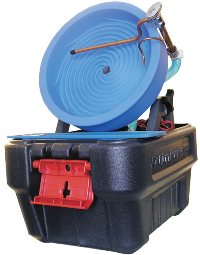
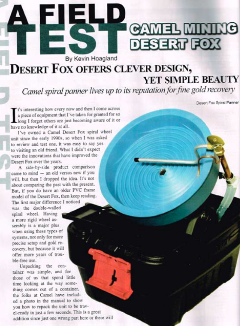
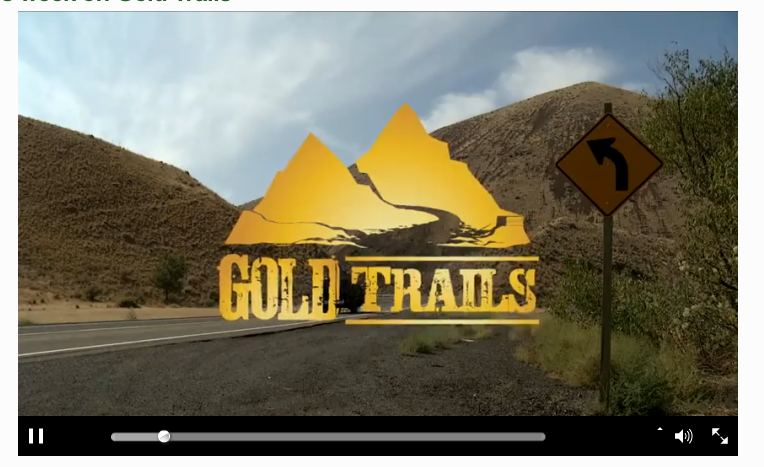
 achines worth every penny all on their own, but the value gets even better when the manufacturer puts together special holiday bundles that include extra coils and other useful items and
achines worth every penny all on their own, but the value gets even better when the manufacturer puts together special holiday bundles that include extra coils and other useful items and 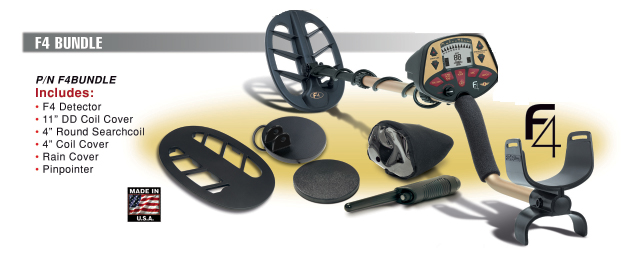
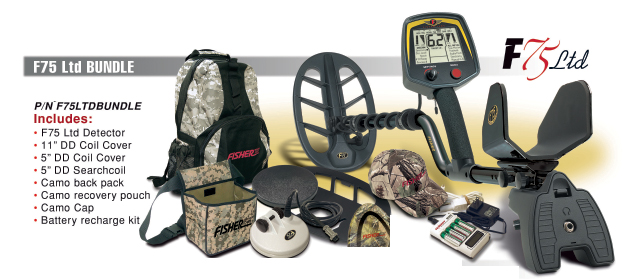

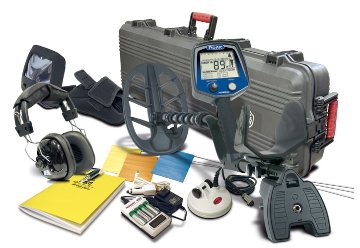
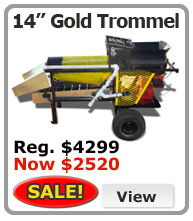 Move more material... get more gold is the best reason to upgrade your gold recovery efforts to a trommel, but now there's an even better incentive -- the
Move more material... get more gold is the best reason to upgrade your gold recovery efforts to a trommel, but now there's an even better incentive -- the 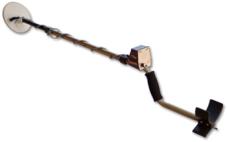

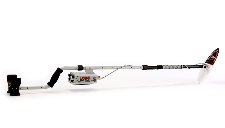 • Do you have gold fever? The Lobo Super TRAQ is an incredibly versatile, feature-rich machine that triumphs in small gold nugget prospecting. Spoil yourself with a detector that self-adjusts to any type of soil, even in highly mineralized locations. While the Lobo is designed to find gold, it also thrives in detecting coins, relics, and other treasures, too. A great value for only $679.15!
• Do you have gold fever? The Lobo Super TRAQ is an incredibly versatile, feature-rich machine that triumphs in small gold nugget prospecting. Spoil yourself with a detector that self-adjusts to any type of soil, even in highly mineralized locations. While the Lobo is designed to find gold, it also thrives in detecting coins, relics, and other treasures, too. A great value for only $679.15!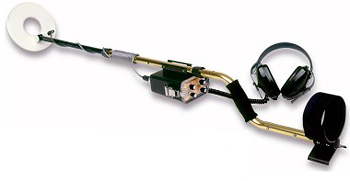

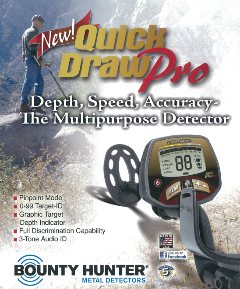
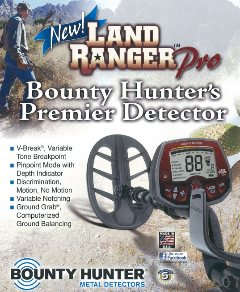
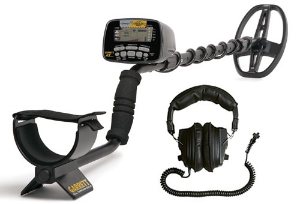 If you prefer a finer degree of control, manual ground balancing is achieved by raising and lowering the detector coil a few inches over the ground. The detector will sound off either as the coil approaches the ground or as it is raised away form the ground. The ground balance control is manipulated until there is no sound either raising or lowering the coil. The detector is now said to be ground balanced. (Always read your detector's Owners Manual, too, for instructions.)
If you prefer a finer degree of control, manual ground balancing is achieved by raising and lowering the detector coil a few inches over the ground. The detector will sound off either as the coil approaches the ground or as it is raised away form the ground. The ground balance control is manipulated until there is no sound either raising or lowering the coil. The detector is now said to be ground balanced. (Always read your detector's Owners Manual, too, for instructions.)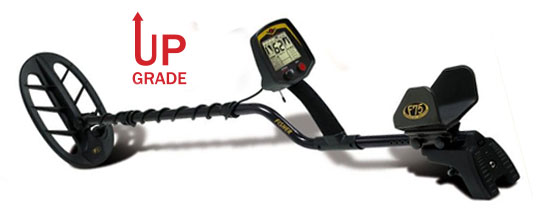
 If you carry a cell phone or other high-tech gadget with you out in the field, try turning it off (all the way off -- not just airport mode) and see if that solves the problem. When hunting near overhead power lines, you may get the best results right under the lines; the worst results occur about a 30 to 45 degree angle away. Many sources of interference are intermittent, so through trial and error you might find that a particular time of day or day of the week is makes it more or less difficult to detect. Power lines are usually quietest late at night and on early weekend mornings.
If you carry a cell phone or other high-tech gadget with you out in the field, try turning it off (all the way off -- not just airport mode) and see if that solves the problem. When hunting near overhead power lines, you may get the best results right under the lines; the worst results occur about a 30 to 45 degree angle away. Many sources of interference are intermittent, so through trial and error you might find that a particular time of day or day of the week is makes it more or less difficult to detect. Power lines are usually quietest late at night and on early weekend mornings. as determined to find the source. For months, the Georgia native followed North Clear Creek upstream from the present-day city of Golden, and on May 6, 1859, made the first lode discovery in the Rockies! Gregory sold his two claims for $21,000 a few months later and left the area, but his name carries on. “Gregory Gulch” is located between the towns of Central City and Black Hawk. The Gregory Mining District encompasses these towns plus several other mining camps, and as a whole, this area is referred to as "The Richest Square Mile On Earth.” Central City takes it name from being “central” to all the mining activity.
as determined to find the source. For months, the Georgia native followed North Clear Creek upstream from the present-day city of Golden, and on May 6, 1859, made the first lode discovery in the Rockies! Gregory sold his two claims for $21,000 a few months later and left the area, but his name carries on. “Gregory Gulch” is located between the towns of Central City and Black Hawk. The Gregory Mining District encompasses these towns plus several other mining camps, and as a whole, this area is referred to as "The Richest Square Mile On Earth.” Central City takes it name from being “central” to all the mining activity. One of the most notable buildings in downtown is the 150-room Teller House Hotel. Located on the corner of Eureka and Pine Streets, it was built in 1872 at a cost of $87,000, plus another $20,000 to furnish. From its non-descript exterior, you’d never believe that the Teller House was once considered to be the most elegant hotel between Chicago and San Francisco. Financed largely by Henry Teller, who became the first senator from Colorado and later, Secretary of the Interior, it’s no longer used as a hotel but is the center for opera-related activities (Central City Opera House is next door).
One of the most notable buildings in downtown is the 150-room Teller House Hotel. Located on the corner of Eureka and Pine Streets, it was built in 1872 at a cost of $87,000, plus another $20,000 to furnish. From its non-descript exterior, you’d never believe that the Teller House was once considered to be the most elegant hotel between Chicago and San Francisco. Financed largely by Henry Teller, who became the first senator from Colorado and later, Secretary of the Interior, it’s no longer used as a hotel but is the center for opera-related activities (Central City Opera House is next door).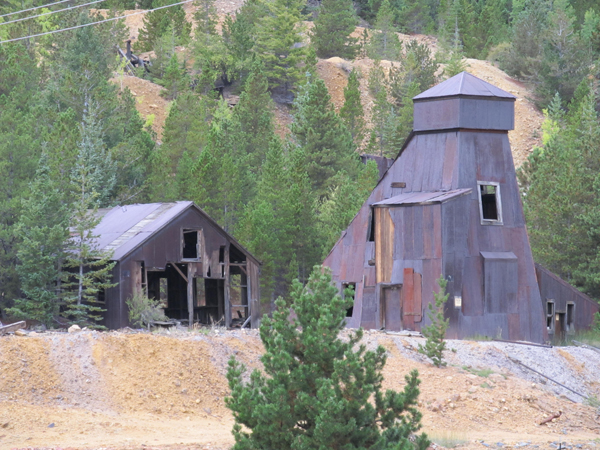 Known for their excellent stonework, the rock retaining walls visible in various places along the route were built by a very large population of Cornish miners. The walls were part of the former Gilpin Tramway, a 26-mile narrow gauge railroad that once looped around the gulches and through the surrounding communities. Sidings went to many of the major mines. Most of the retaining walls don’t use mortar, and were instead constructed using a dry-stack method. After more than a century, most of the rockwork is still holding up— no maintenance required.
Known for their excellent stonework, the rock retaining walls visible in various places along the route were built by a very large population of Cornish miners. The walls were part of the former Gilpin Tramway, a 26-mile narrow gauge railroad that once looped around the gulches and through the surrounding communities. Sidings went to many of the major mines. Most of the retaining walls don’t use mortar, and were instead constructed using a dry-stack method. After more than a century, most of the rockwork is still holding up— no maintenance required.